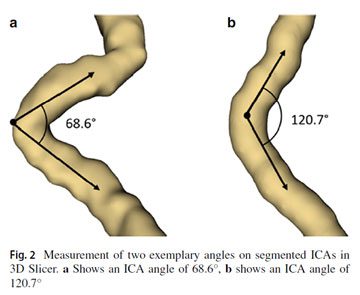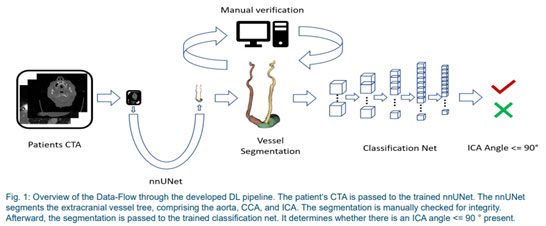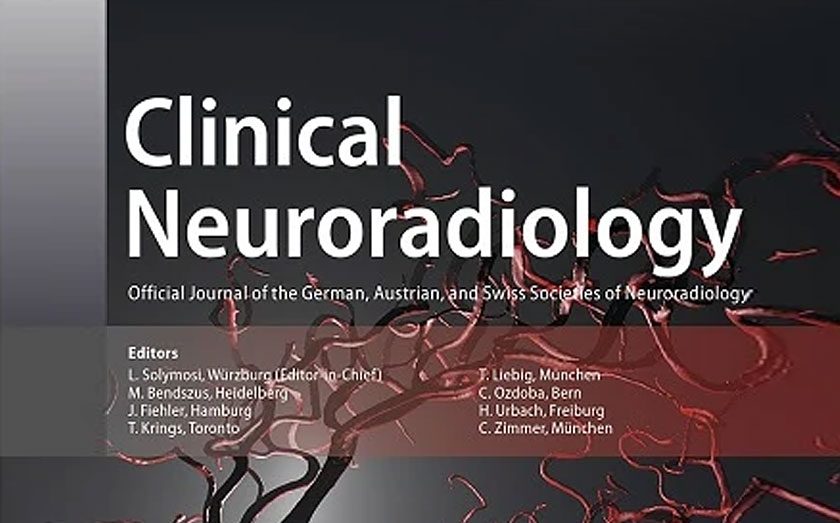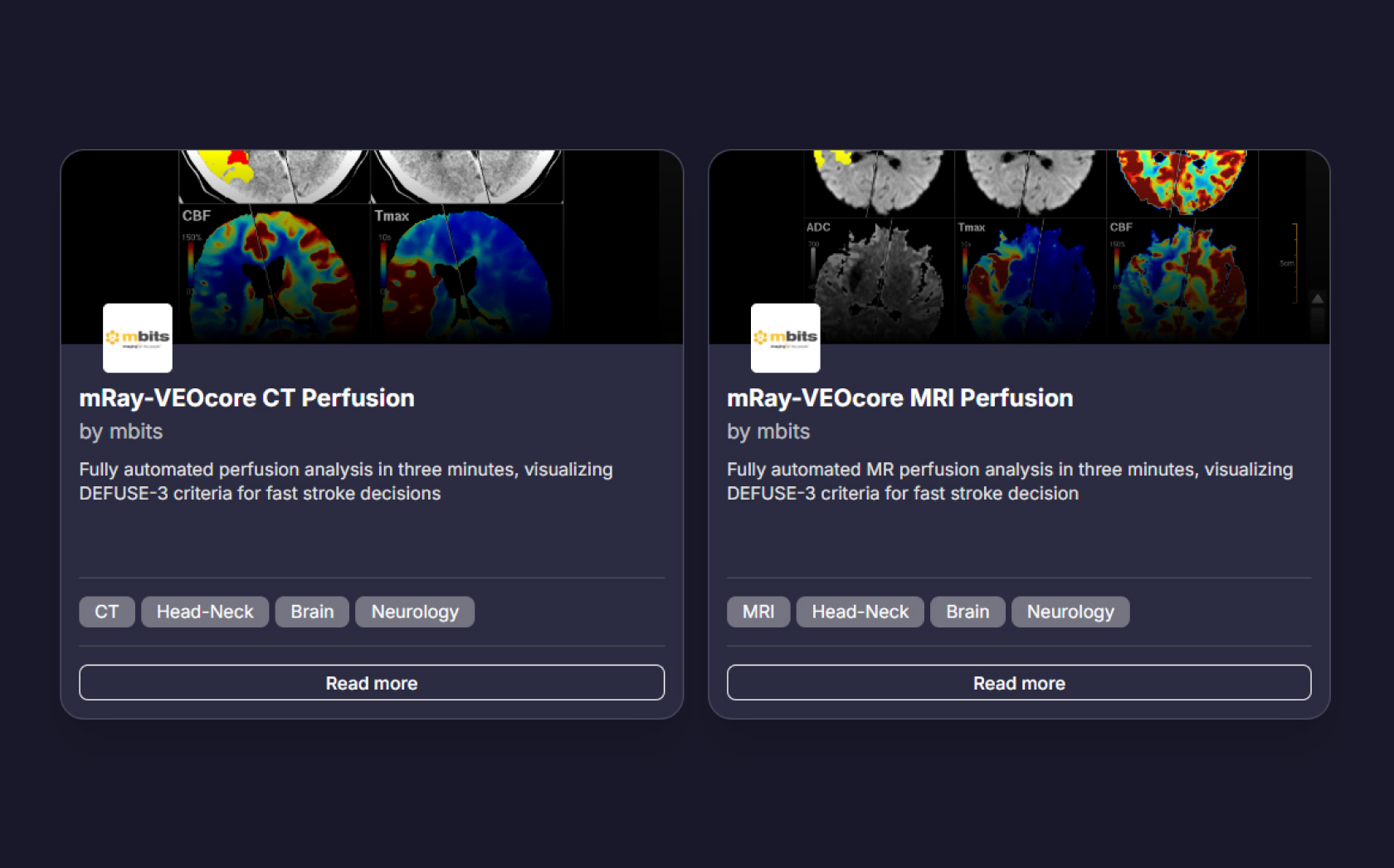The latest issue of the journal "Clinical Neuroradiology" has published the research results of mbits employee Gregor Nageler, who, as part of his doctoral thesis, focused on the automated prediction of the success of thrombectomy. Under the supervision of our CEO Ingmar Gergel and CTO Markus Fangerau, in collaboration with the Neuroradiology department of Heidelberg University Hospital, the paper titled "Deep Learning-based Assessment of Internal Carotid Artery Anatomy to Predict Difficult Intracranial Access in Endovascular Recanalization of Acute Ischemic Stroke" was developed.
One important predictor of neurological outcomes in stroke patients is the duration of thrombectomy. The aim of the study was to automatically identify complex cases using a deep learning-based analysis of computed tomography angiography (CTA).
Initially, a neural network was trained to automatically segment the aortic arch and carotid arteries in CTAs. For algorithm training, 121 datasets were manually segmented in detail. The Dice score, which indicates the degree of overlap between the manual segmentations and those of the network, was 0.94. The network was then used to automatically segment 258 additional CTA images.
The now total of 379 vascular segmentations were divided into two classes based on the presence of an acute angle (90°) in the internal carotid artery (ICA). This classification was based on a recent publication [1], which demonstrated the relationship between acute angles in the carotid artery and longer thrombectomy durations. This relationship was also reproduced in this study dataset using a Whitney U-test. While the intervention time was 48 minutes for the >90° group, it was already 64 minutes for the <90° group (p=0.001).

The binary dataset was used to develop a second network that recognizes whether an acute angle is present in the vessel or not based on the segmentation. While acute angles can be easily recognized at a glance in two-dimensional images, searching for such angles in a three-dimensional vascular tree is time-consuming, making automatic classification advantageous. The network was able to detect acute angles with an accuracy of 85%.
The deep learning method developed in this study can automatically identify complex thrombectomy cases based on CTA images. This method assists doctors in preparing and performing interventions accordingly.

The study results were also presented at the DGNR Neurorad conference.
[1] Holswilder G, Stuart MP, Dompeling T, Kruyt ND, Goeman JJ, van der Lugt A, Schonewille WJ, Lycklama À Nijeholt GJ, Majoie CB, Yo LS, Meijer FJ, Marquering HA, Wermer MJ, van Walderveen MA; MR CLEAN Registry investigators. The prognostic value of extracranial vascular characteristics on procedural duration and revascularization success in endovascularly treated acute ischemic stroke patients. Eur Stroke J. 2022;7:48–56.






